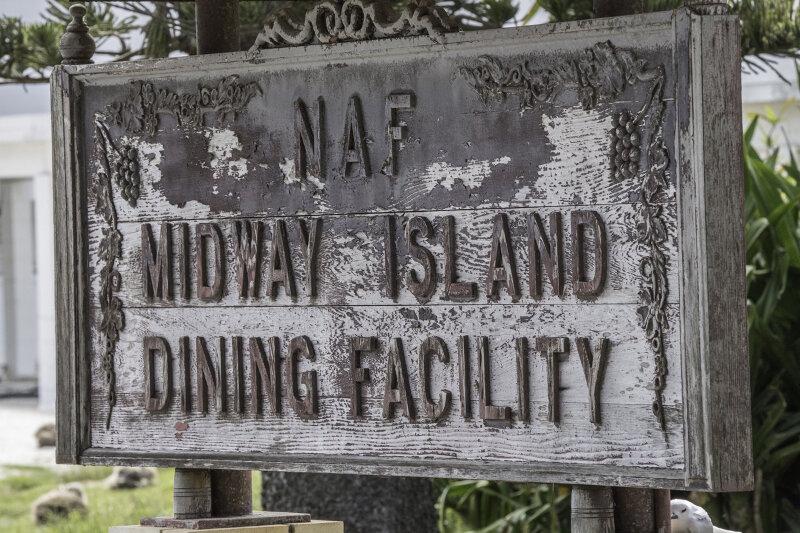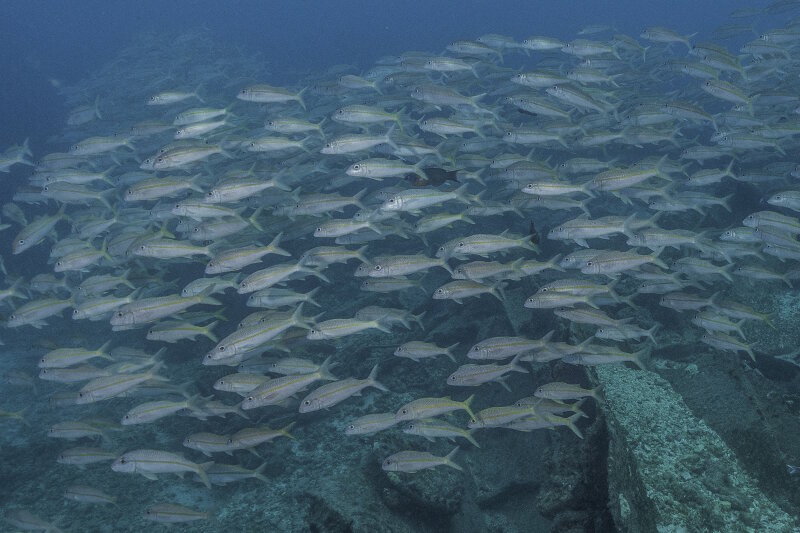
By Dave Conlin, Chief - National Park Service Submerged Resources Center
May 5, 2017

Historic guns placed in the mall at Midway Atoll as a reminder of its military history. Image courtesy of Brett Seymour, Exploring the Sunken Heritage of Midway Atoll expedition. Download larger version (jpg, 891 KB).
About 28 million years ago, the geographical point now located at 28°12'N 177°21'W paused during its northern crawl of continental drift long enough for a hotspot of molten rock to melt through the Earth’s crust and bubble upwards into the Pacific Ocean. In a process that started at Kure Atoll and would be repeated all the way down the Hawaiʻi Emperor Chain to the big island of Hawaiʻi, the volcanic plug of basalt was crowned in a tiara of coral over millions of years and became our home for the next week and a half—Midway Atoll.

Old officers' homes at Midway Atoll and dozens of albatross finding their new homes on the lawn. Image courtesy of Brett Seymour, Exploring the Sunken Heritage of Midway Atoll expedition. Download larger version (jpg, 1.1 MB).
After hundreds of thousands of years of fish and birds, coral and seals, whales and jellyfish, humans laid their first, faint, brushstrokes on this awesome collision of land, sea, and sky. The ancient Hawaiians sailed here in acts of astounding maritime prowess, followed later by those seeking whales, and later still by others building a transpacific talking wire and then a waystation for their flying boats. After the talking wire came several wars, one very hot with a cataclysmic battle that took its name from the atoll, and another, much colder that left its imprint in missile tracking stations and generator buildings that we see daily as we cycle past them on our way to the boat. Now they seem like distant imprints of a much larger story, a vague reference to a history that has almost been swallowed up by the massive North Pacific rollers that wash over Midway’s reefs with a booming crash.

Historic sign marking the original Dining Facility at Naval Air Facility Midway Island. Image courtesy of Brett Seymour, Exploring the Sunken Heritage of Midway Atoll expedition. Download larger version (jpg, 815 KB).

School of Mulloidichthys flavolineatus (weke, yellowstripe goatfish) spotted underwater during one of the team’s dives. Image courtesy of Brett Seymour, Exploring the Sunken Heritage of Midway Atoll expedition. Download larger version (jpg, 830 KB).
All of these vague scratching, these vague physical remnants of much larger passions spelled out in blood and treasure are here for us to discover and to explore. Daily we have been setting out into a sea so vast, so very distant from everywhere—everywhere else—that it turns your mind inside out if you think about it too much. Midway isn’t close to anything at all—it sits in the middle of the largest ocean on our planet—and the tiny marks of history that have been left in layers out on the miles and miles of reef for us to find with our magnetometers and divers are a daunting task indeed.